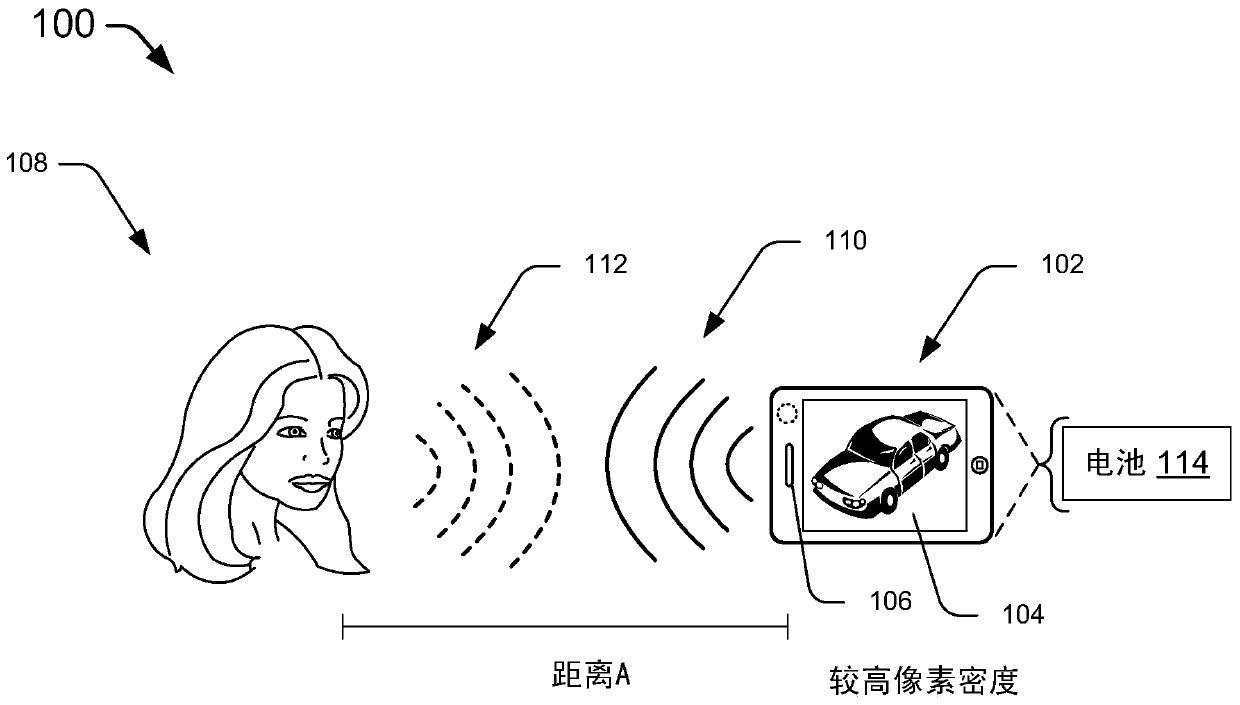Reduce power consumption in mobile devices through dynamic resolution scaling
A computing device, pixel density technology, applied in the direction of reducing energy consumption, power management, wireless communication, etc., can solve problems such as increased power consumption and no improvement in user viewing experience.
- Summary
- Abstract
- Description
- Claims
- Application Information
AI Technical Summary
Problems solved by technology
Method used
Image
Examples
Embodiment Construction
[0012] As discussed above, computing devices increasingly have displays that display content at high display resolutions. Displaying content at high pixel display densities requires significant system resources, such as processing power, which in turn results in high system power consumption. However, many of these high pixel display densities exceed human visual perceptibility. As a result, many display devices display content at resolutions that require significant processing power, but do not provide an improved user experience over what lower resolutions can provide.
[0013] This disclosure describes techniques for identifying a pixel density at which content is to be displayed to a user based at least in part on a user's distance from a display. For example, a computing device may use a display density below the maximum display density of the computing device but equal to or above the human visual perceptibility density at that distance (i.e., one above which an average...
PUM
 Login to View More
Login to View More Abstract
Description
Claims
Application Information
 Login to View More
Login to View More - R&D
- Intellectual Property
- Life Sciences
- Materials
- Tech Scout
- Unparalleled Data Quality
- Higher Quality Content
- 60% Fewer Hallucinations
Browse by: Latest US Patents, China's latest patents, Technical Efficacy Thesaurus, Application Domain, Technology Topic, Popular Technical Reports.
© 2025 PatSnap. All rights reserved.Legal|Privacy policy|Modern Slavery Act Transparency Statement|Sitemap|About US| Contact US: help@patsnap.com



